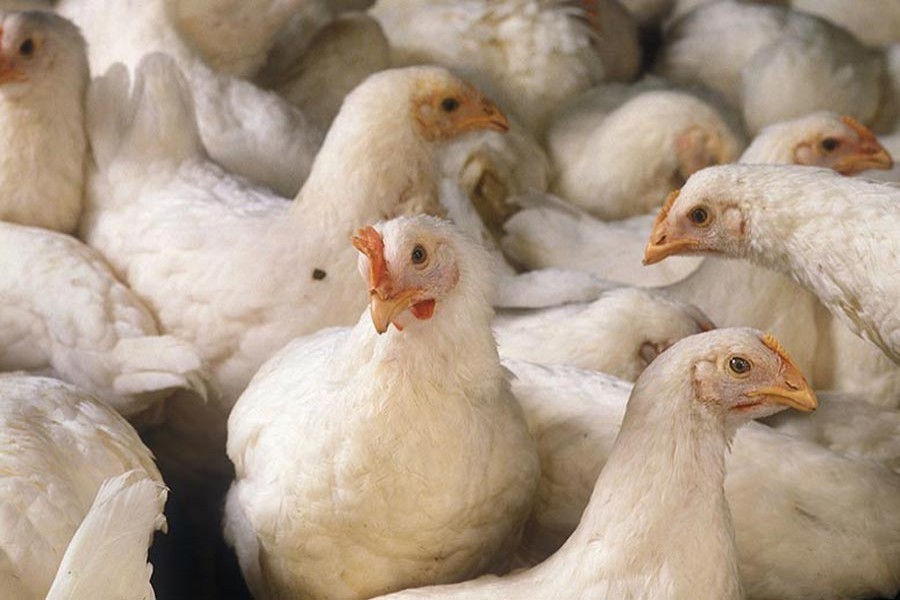A recent report published in the British multidisciplinary science journal, Nature, says that a variant of bird flu virus, H5N1, that can spread from mammal to mammal also poses risk to both humans and wild animals. At an American mink farm in Spain, the outbreak of H5N1 occurred in October 2022. Scientists through genetic sequencing found that the bird flu virus that infected the minks was a new variant of the H5N1. The genetic material included a strain from gulls and it also bore the mark of a genetic change that increases some bird flu virus's ability to reproduce in mammals. In fact, this change in the genetic makeup of the avian flu makes it unpredictable. The virus found in the American mink farm in Spain should be under closer scrutiny so that it may not infect people, scientists warned. What is worrying is that the H5N1 seems to be gaining its capacity for jumping from birds to mammals. So far as the American experience goes, about a dozen species including racoon fox, seal and grizzly bear have been found to be infected by the avian flu virus.
According to the US Centers for Disease Control and Prevention (CDC), the ancestors of the H5N1 bird flu that were infecting wild birds and poultry since 2021, first emerged in southern China in 1996. That was followed by widespread infection in the poultry population in Hong Kong in 1997. However, the outbreak could finally be controlled. Later the bird flu (H5N1) reappeared in 2003 and broke out among birds throughout Asia. Then it spread to Africa, Europe and the Middle East infecting poultry birds. But there were also some sporadic reports of human infection by the avian flu virus. In 2014 and 2015, it again appeared in the wild birds and poultry in the USA and Canada leading to massive outbreak of the avian flu among the poultry population of those two countries.
However, as the records of the World Health Organization (WHO) goes, since 2003 reports of human infections with avian flu H5N1 have been few and far between. Meanwhile, through comparing the properties of H5N1 viruses responsible for earlier outbreaks of avian flu with those of 2021and 2022, the US national public health agency, CDC, also found some differences (in properties of H5N1 of 2021-22). And the CDC views the observed changes in the H5N1 virus to be benign in nature since some elements of the past bird flu that were responsible for infections among humans are absent in latest version of bird flu (H5N1).Even so, the recent devastating impact of the avian flu on poultry population with some 15 million birds dead and 193 million culled, its fast spread across the continents, the changes found in the genetic make up of H5N1 that enabled it to jump from birds to mammals. The occasional reports, though rare, of human infections by the virus give reasons to be concerned. As recently as in January, a WHO report said that a young girl was infected by the avian flu in Ecuador. This is first such report from South America. Al Jazeera reports that last year there were only five cases of human infection by the bird flu. In the past, according WHO, the mortality rate of the humans infected by bird flu was 53 per cent. Actually, between 2003 and 2009, 468 people, mostly poultry workers, were reported to have been infected by the bird flu. And 282 of those infected died of the disease. In the last two decade, 457 cases of people dying after the bird flu infection could be confirmed. Though epidemiologists are seeing no cause for alarm, still the general public with their recent experience with covid-19 pandemic want to be reassured. The recent history of the H5N1 variant's ability to kill birds and mammals like the American minks on an unprecedented scale is obviously concerning.
Against this backdrop, it would be worthwhile to see under what conditions the bird flu virus infected people leading to their deaths. The illness caused by the avian flu among people was both mild and severe. In milder cases, from eye infection to upper respiratory infections occurred. In the severer cases, it turned into pneumonia causing the deaths. Those who got infected by the bird flu were in close contact with the infected birds for long without taking any precautionary measures such as wearing of gloves, masks or other protective gears to safeguard their lungs and eyes from the virus. The victims touched or even breathed in from air polluted with droplets of the sick birds' saliva, mucous, faeces, etc. Such long exposure of the unprotected human subjects to the bird flu can cause mild to severe respiratory conditions and may ultimately prove deadly for some. Scientists have discovered five subtypes of the bird flu viruses that can spread to people causing respiratory illness. Those include H5, H6, H7, H9 and H10. And the subtypes causing most of the infections are H5N1, as we already know and the H7N9 variants. However, reports of the bird flu-infected people spreading the disease among other people by contagion are indeed rare. Until now, the avian flu is still an animal health issue, says the US national public health agency, CDC.
But that does not mean that precautionary measures are not necessary. The behavioural interventions including social distancing and other health protocols, even resorting to lockdowns in extreme cases as were practised during the covid-19 pandemic is the proven deterrents against any new pandemic. If the bird flu virus by any accident of natural origin turns into a deadly virus infecting humans on a massive scale, then behavioural interventions should be the first weapon to fight it. That is, until, of course, an effective vaccine is developed against the new pandemic.


